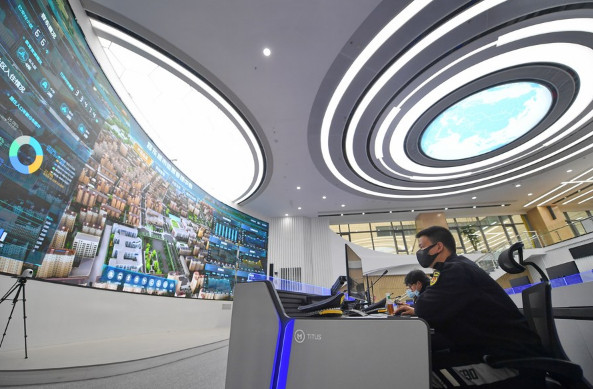China’s smart city challenge

According to a World Bank analysis back in 2000, the larger the urban population, the more prosperous the economy and the higher personal income would be.
The analysis is still true today. A study last year by an Indian government think tank and the Asian Development Bank found that after accounting for factors such as age, gender, education, type of worker (i.e. regular versus casual), industry, and more, in 2011, the average monthly income of full-time salaried workers in India's cities with 1.5 million or more inhabitants was, on average, 16% higher than in small cities and about 36% higher than in rural areas.
No wonder countries around the world are committed to promoting urbanisation, and China's accomplishment is even more obvious. In 1978, the country’s national urbanisation was only 17%, by 1996 it had increased to 30%, and by the end of 2022, it reached 65%, higher than the world average of 56%.
As early as 2014, the central government announced the development directives, main objectives and key tasks of smart cities through a number of policy documents. Many cities have closely followed the central government's policies with Beijing, Shanghai, Guangdong, Nanjing and other provinces and cities having taken the lead in including smart cities as their construction priorities. According to 2014 statistics, at that time, all cities at or above the sub-provincial level, 89% of cities at the prefecture level and above, and 47% of cities at the county level and above proposed to develop as smart cities.
Smart cities have now become a huge industry in the mainland. Data analysis firm IDC estimates that in 2022, investment in the smart city market led by the Chinese government will be US$21.4 billion, up 21% from 2021, and is expected to approach US$40 billion by 2026.
What are the main objectives to be achieved with the huge investment?
The mainland website for local industry practitioners "Smartcity.Team" sorted out more than 3,000 pieces of information on the winning tenders of provincial, municipal and district-level governments and state-owned enterprises in the first half of 2022 which won government allocation of fund amounting to about RMB78 billion, and found that the projects covered various categories of smart cities, including government affairs, transportation, community, water supplies, emergency response, education, medical care, and more.
The top three provinces with the largest funding allocation were Sichuan (RMB 8.4 billion), Shandong (RMB 8.3 billion) and Guangdong (RMB 6.9 billion). Investment focused on smart cities and operation centers (RMB10.5 billion), government affairs-related, such as government cloud and government informatisation (RMB 8.5 billion), and transportation (RMB 6 billion).
However, China's urbanisation development has faced many challenges in recent years, one of which is how to make use of the relatively perfect infrastructure to benefit citizens, that is, the practicality and effectiveness of scenario-based applications commented by IDC. The report says that the current construction of some smart city scenarios lacks actual demand, and there is still much room for improvement in practicality and effectiveness.
To address the issue, the analysis firm proposes to establish a "standard, performance management and development evaluation system" to promote the transformation of the development model so as to enhance the economic and social benefits of the investments.
-- Contact us at [email protected]
-

Integration of GIS and BIM can drive development of smart city Dr. Winnie Tang
The China Association for Geospatial Industry and Sciences (“the CAGIS”) released the Top Ten Highlights of China's Geographic Information Industry in 2023, which provides much inspiration. The
-

Equip young people for the future Dr. Winnie Tang
In late February, the inaugural flight of an air taxi from Shenzhen Shekou Cruise Homeport to Zhuhai Jiuzhou Port took only 20 minutes with an estimated one-way ticket price of 200 to 300 yuan per
-

Are we raising a generation of leaders, or of followers? Brian YS Wong
The essence of education is defined not by the facts it imparts, but the potential knowledge it inspires students to individually pursue on their own. Put it this way – the ideal form of education
-

The urgent need for reforms to sex education in Hong Kong Sharon Chau
Nearly one in every four university students (23%) in Hong Kong has been sexually harassed, according to a 2019 report published by the Equal Opportunities Commission (EOC). A 2019 study found that
-

STEAM should be linked to real life Dr. Winnie Tang
In the 2017 Policy Address, STEM (science, technology, engineering and mathematics) education was proposed as one of the eight major directions to promote I&T development. Since then, funding has














